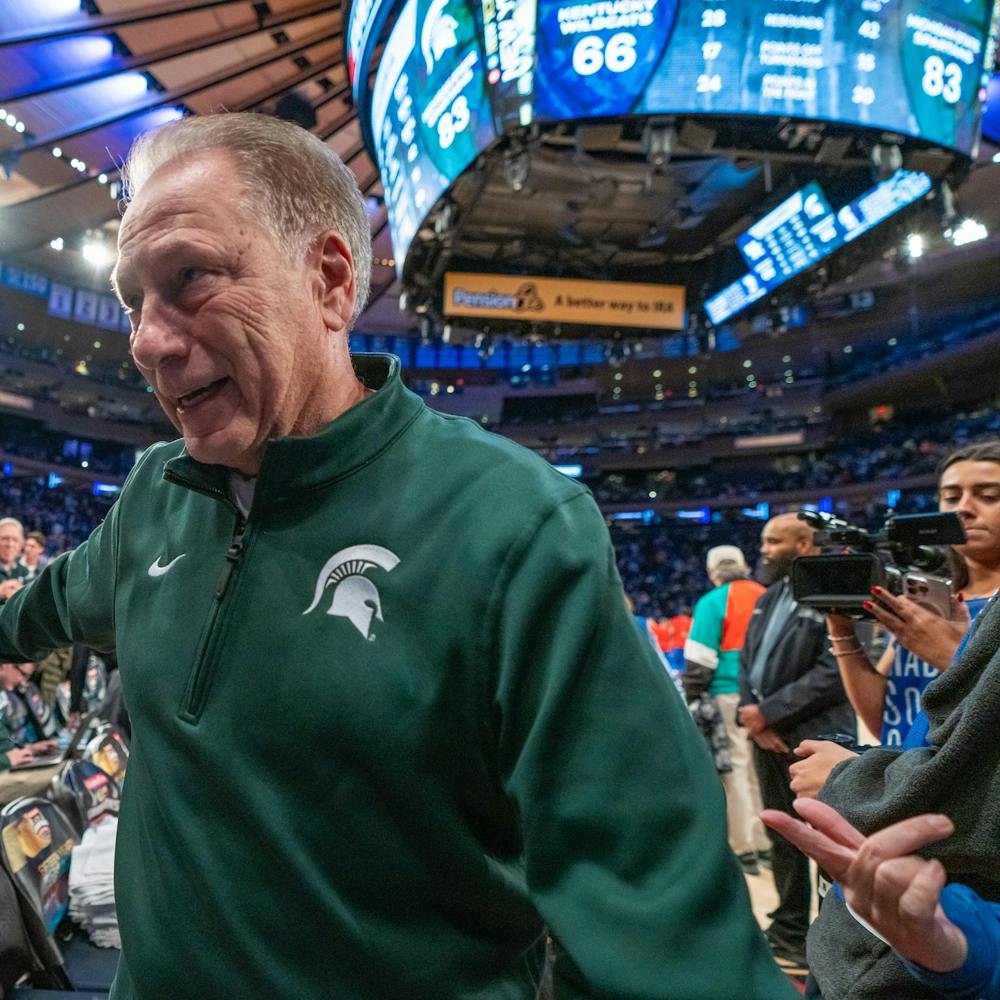They’re not much to look at now — maybe just a few clusters of daffodils, nondescript greenery and an unassuming pavilion. But give the MSU Horticulture Gardens a couple months. That’s when they’ll come alive and that’s when they’ll be full of the perennial plants and the estimated 40,000 flowers and plants that are planted each year.
Several areas comprise what is referred to as the Horticulture Gardens, which take up more than 14 acres of MSU’s campus, located between the Plant and Soil Sciences Building, the Food Safety and Toxicology Building and the Plant Biology laboratories. The gardens include the Horticultural Demonstration Garden, Amien A. and Florence M. Carter Annual Trial Garden, Perennial Garden and Michigan 4-H Children’s Garden.
Dan Bulkowski, garden and greenhouse manager, said many people don’t even know the gardens exist until they stumble upon them one day.
“There’ve been so many times people didn’t know it was here,” he said. “They’ll be walking around Plant Biology and say, ‘wow, where did this come from?’”
“Getting something out of nothing”
The demonstration garden turned 15 years old last August, although Bulkowski said the gardens as a whole have been around for about 20 years.
During the winter months, about five student workers and the full-time gardens employees spend their time looking through sheet catalogues with the different seed variations for some of the different trials that will be planted in the spring. Over the course of the spring, everyone is working to make the plants and seeds ready for planting. This consists of transplanting, sowing seeds, pruning outside and cutting back the grass.
There is some variation in the gardens from year to year, especially in the trial beds, where they can test about 500 new seeds and plants. But the focus of much of the gardens is a demonstration of what the Horticulture Gardens have and what they can do.
For him, the best part of the job is spring time — the planting time.
“I like starting the season with planting. I’ve done that since I was a little kid, starting with seeds, growing plants,” he said. “I think it’s the getting something out of nothing aspect.”
After starting in a landscaping business and moving on to work at Forest Akers Golf Courses, Bulkowski moved to the Horticulture Gardens to work with the annual trials in 1999.
Although the gardens receive some funding from the university, he said most of the money needed is raised by donations, programs, events and rentals. Programs put on by the gardens include guided tours and educational programs.
The gardens will host their annual plant sale of flowers such as begonias, trees, shrubs and other plants from 7 a.m. to 2 p.m. May 30 at the Plant and Soil Sciences Building.
A wedding destination
An hour before Amy Ovalle’s wedding ceremony was slated to begin, the sky erupted with golf ball-size chunks of hail. At that point — after overcoming rain, flooding and other complications — Ovalle said she gave up her fate to God.
“In an hour, it turned into beautiful weather,” she said.
Ovalle, who is an event coordinator, often for weddings, said she really wanted a location for the wedding where she could do everything herself. She had been through the gardens all the time before she graduated from MSU in 2004 and loved the atmosphere. In August 2006, Ovalle married her husband, Charles, in the gardens’ Anniversary Plaza.
“I’ve seen hundreds, thousands of weddings and this wedding was really beautiful,” said Ovalle, a Lansing resident. “To be out dancing near the fountain, that was really special. I wanted a really interactive place where guests could go have a romantic evening of their own and not be stuck inside.”
Since the wedding, Ovalle and her husband have been back to the gardens on several occasions to take their two children for walks through the Michigan 4-H Children’s Garden.
Making it grow
Support student media!
Please consider donating to The State News and help fund the future of journalism.
Christine Mangiavellano, a horticulture junior, started working at the gardens about three weeks ago.
“I’d never worked in any kind of greenhouse before, and I loved the gardens,” said Mangiavellano, who also tends to container gardens at her apartment and her family members’ homes. “When they started hiring, I jumped right on that.”
So far, her job has consisted of a lot of watering and moving plants — basic things that need to get done before they start outdoor planting in May.
“I like watching (plants) grow from a seed to a little green plug to maybe a flower,” Mangiavellano said. “I just like watching them grow and take on a personality.”
She and the other student workers are responsible for watering and weeding the gardens by hand — Bulkowski said the garden’s irrigation system only waters the grass.
She also gets to water Wilbir the Peacock, a 14-foot structure which is created with more than 3,000 bedding plants.
Wilbir, or “Will’s Bird,” is named for Dr. William Carson, a former director of the gardens and chief promoter of the peacock. Inside its frame, Wilbir is full of soilless planting mix, paper netting to hold it in place and Styrofoam packing materials to hold the plants in place. The plants, typically pink, white and red Begonias, are planted in early May as well.
Other highlights of the garden include the Clarence E. Lewis Landscape Arboretum, named as a tribute to an MSU horticulture professor, the Perennial Garden and Frank’s Nursery Rose Garden, which is sponsored by the company it’s named after.
After working outside on Saturday, Mangiavellano said she’s excited to have a job that will let her enjoy the summer weather.
“It’ll be nice,” she said. “I’ll have some weird tan lines, but I’m OK with that.”
Discussion
Share and discuss “Sow far, sow good” on social media.






